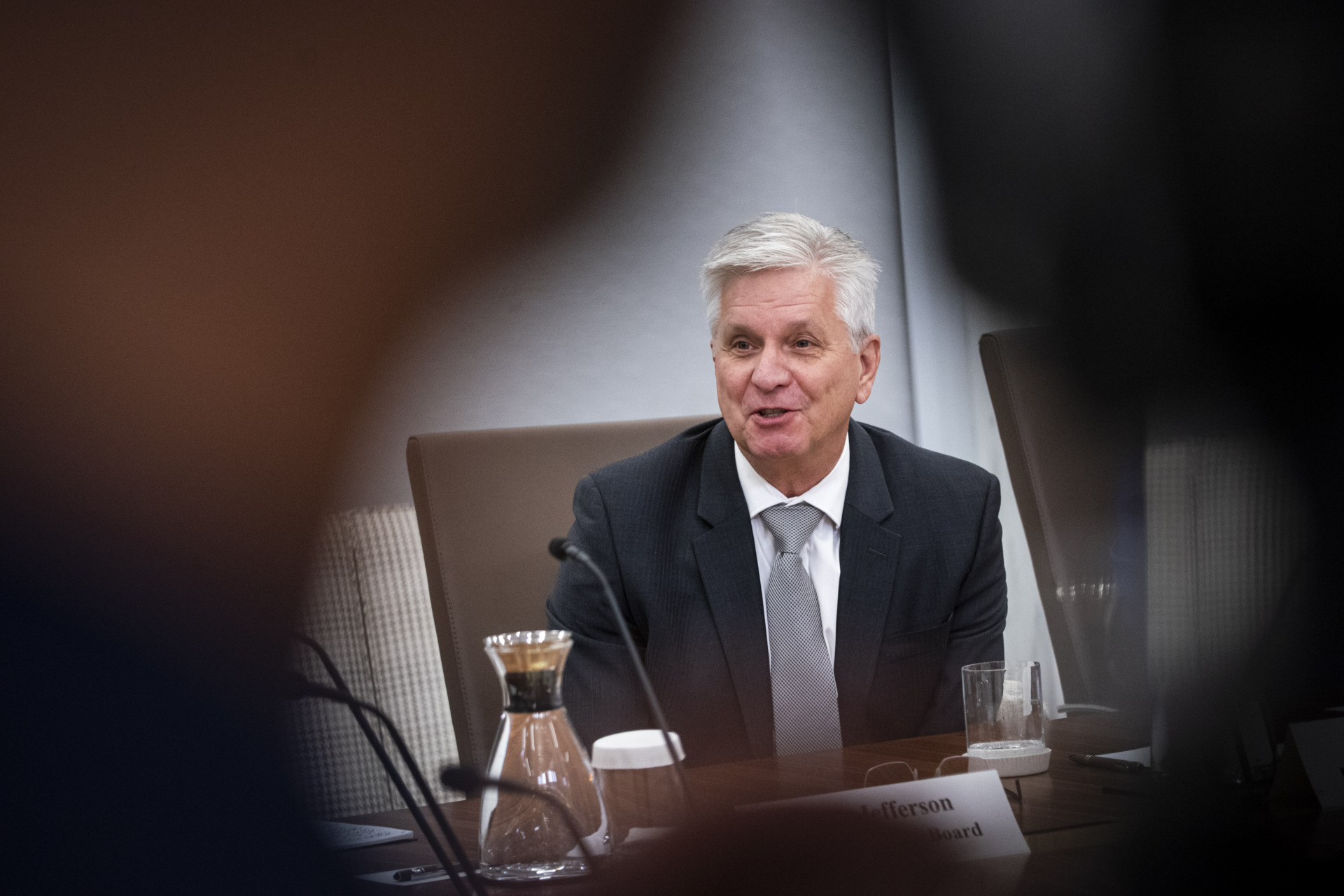Something Ain’t Giving
Fed officials have made it very clear that the prospect of interest rate cuts will very much turn on the pace of economic growth. This week’s economic data very likely pushed the timing of a rate cut further out on the calendar.
It’s very clear that the economy has slowed from the breakneck 4.9 percent pace of real growth and 8.3 percent pace of nominal growth we experienced in the third quarter of last year. No one expected the economy to grow that fast—in fact, many analysts began 2023 by predicting a recession in the second half—and no one expected it to keep growing that fast.
But the economy does not appear to have cooled as much as expected.
Waller Dressed as a Dove for Halloween
Early on, it seemed as if some of the unusually high third-quarter activity might have been pulled forward from the fourth quarter, which would indicate below-trend growth for the final three months of the year. Christopher Waller, the last Fed Governor appointed by Donald Trump, pointed out this possibility in his “Something’s Got To Give” speech back in October of last year.
After pointing out how strong growth was in the third quarter—and hinting that maybe the initial estimate was likely to be revised down (it was not)—Waller explained that the fourth quarter might be weak enough to rebalance the strength of economy:
The question is whether that acceleration of real activity will be sustained. Sometimes an uptick in activity is followed by some payback, or slowdown. For example, if firms pull construction forward because of good weather, then current structures investment will be high now but lower in the next period. Thus, we want to be careful and not pay too much attention to the specific month activity took place but instead average growth over a couple of quarters to get a clearer picture of the underlying strength of the economy.
Waller went on to emphasize that he would be watching consumer spending data very closely and patiently.
In October, there were hints that the slowdown might happen. The economic data seemed to be following Waller’s “payback” script.
Retail sales were reported to have contracted for the month, the first decline in nominal spending at stores in seven months. Excluding autos and gas stations, retail sales rose by just 0.1 percent. The consumer price index was flat for the month, and the index of core prices rose just 0.2 percent. The jobs report showed payrolls expanding by just 150,000 jobs (later revised down to just 105,000). Both the University of Michigan and Conference Board indexes showed a dimming of consumer attitudes.
This fueled hopes for earlier and frequent interest rate decreases by the Federal Reserve. For some, it raised the prospect of a recession in the first half of 2024, with the expected decline in the fourth quarter of 2023 extending and deepening in the first and second quarters of this year. An even more popular forecast was that the economy was headed for a soft landing in which inflation stayed on a glide path toward the Fed target while growth cooled but avoided a serious slump.

Federal Reserve Governor Christopher Waller speaks during a Fed Listens event in Washington, DC, on Sept. 23, 2022. (Al Drago/Bloomberg via Getty Images)
When Waller gave his follow up speech in December, he pointed to signs of weakening consumer spending as evidence that (as he titled his speech) “Something Appears to Be Giving”:
Data on economic activity in October indicate that consumer spending is cooling from its pace in the third quarter. Retail sales fell 0.1 percent, the first drop since March. Spending was down on motor vehicles, an interest-sensitive sector, which may be evidence that that the FOMC’s tightening of monetary policy is having some effect. Spending was also down at gasoline stations, mostly because of a sizable decline in gas prices, often a larger factor for this segment of retail than shifts in demand. But even without motor vehicles and sales at gas stations, retail sales barely increased in October, which may reflect a broad-based moderation in demand.
The Rate Cut Got Run Over by a Reindeer
The more recent data, however, have painted a very different picture. Hiring picked up in November and then really took off in December, with payrolls expanding by 173,000 and 216,000 respectively. The consumer price index climbed 0.1 percent in November and then accelerated to 0.3 percent in December. The core inflation index rose 0.3 percent in November, a pickup from the prior month, and then rose another 0.3 percent in December, confirming the reacceleration.
Retail sales rose 0.3 percent in November, which was much better than expected and showed shoppers were picking up the pace from the prior month. There were hints that this was just the beginning. Gallup reported that Americans had revised upward their estimates of holiday spending, a rare midseason increase in spending plans. When the December figures finally came in this month, they showed sales were up 0.6 percent for the month, beyond the hopes and dreams of even the most bullish retail analysts.
On Friday, the University of Michigan released its latest read on consumer confidence. Not only did confidence surge for the second month in a row, it saw the biggest month increase since 2005. The combined rises in November and December produce a two-month increase not seen since 1991. Sentiment is now nearly 60 percent higher than its all time low hit in June 2022 and is very close to the historical average since 1978.
In other words, the consumer side of the economy shows signs of heating up—not cooling as forecast. The Atlanta Fed’s GDPNow gauge has the economy growing at a 2.4 percent real rate in the fourth quarter, much higher than the 1.5 percent penciled in by most economists.
When it met back in December, the Fed’s Summary of Economic Projections showed a median expectation of 2.6 percent growth in 2023. (It had been just 2.1 percent back in the September meeting, but the 4.9 percent growth figure in the third quarter almost made that a numerical impossibility.) To get there after growing 2.0 percent in the first quarter, 2.1 percent in the second quarter, and 4.9 percent in the third, growth would have to slow down to 1.5 percent or lower. If we come in at 2.4 percent for the fourth quarter, the economy will likely have grown by around 2.9 percent for the year.
That pace of growth will very likely be enough to force the Fed to hold off on rate cuts, which will make next week’s release of the advance estimate of fourth quarter and full year growth a very important report.

COMMENTS
Please let us know if you're having issues with commenting.